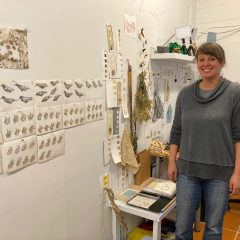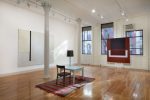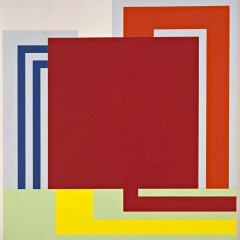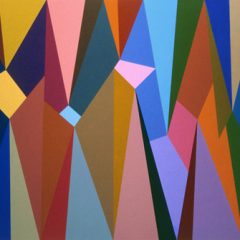I heard a while back from my buddy Julie Karabenick, a painter of geometrical abstractions and founder of the influential web site, Geoform. On the site, Julie has a bunch of great q&a’s with artists, which are wonderful to read and illustrated with many, many pictures. Her new interview is with George Earl Ortman, and below you can read her enthusiasm for the artist in what she wrote me in an email.

…here, as with Karl Benjamin, is a very long, image-intense interview I did with an artist who deserves a lot
more critical attention in his lifetime. He has work, especially from the 60s, in all the major NYC and DC museums. Born in 1926 he’s still going strong:I feel very strongly about trying to get the word out about him. He’s having a solo some time this fall in NYC. He taught at Cranbrook in Michigan for over 20 years, so was, I guess you could say, out of the NYC loop for a spell, but what a body of work! He’s back working in NYC and Castine, Maine. I hope you’ll take a peek.
The image-rich interview is full of details about the artist’s life as a student, educator, and artist. There’s lots of information about Ortman’s ideas on painting and object-making and about his ideas on architecture, form, color and shape. Ortman’s works are remarkable. They span the gamut of precise abstraction passing through Mondrian’s grids and colors and Tom Chimes’s land of symbols and materials. There are lots of cutouts and work mounted on wood; use of aluminum and sculpture-like patinas…And a series of drawings showing how the artist abstracted his geometric compositions from paintings by DaVinei, Seurat or Matisse is pretty interesting. The shape of a cross comes up again and again in the works and that, and the artist’s translation of DaVinci’s Last Supper into an abstraction with a a starburst of celestial rays in the middle makes me say spirituality is big in the artist’s mind. Whatever’s on his mind, this interview is a good read.
If Julie’s name rings a bell, it’s because the Ann Arbor, MI-based artist/curator organized the show, Ordered, at Philadelphia’s Gallery Siano in 2006. I had the pleasure of writing the catalog essays and moderating a panel discussion about geometric abstraction in conjunction with the show.









